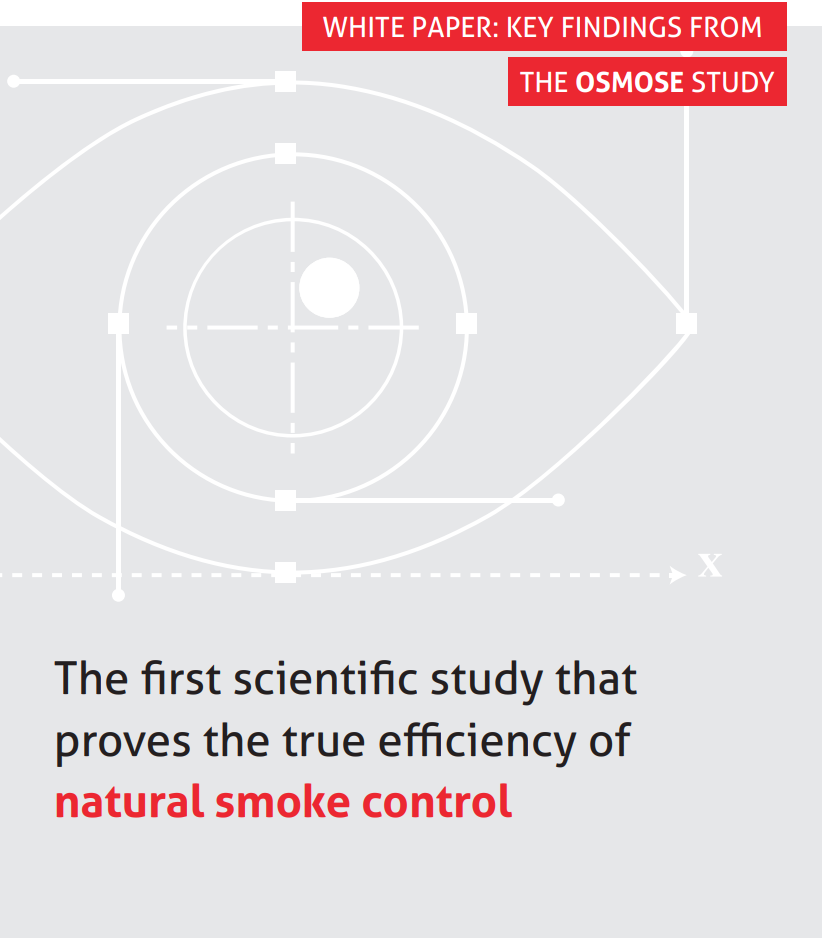The Osmose Study, is the first scientific research to prove the efficiency of Natural Smoke Control.
Commissioned by GIF, the division of the French Federation of Fire Professions (FFMI) that brings together manufacturers, installers, and maintainers of fire stopping, compartmentation, and smoke exhaust systems in France, the study was conducted by leading fire safety laboratories EFECTIS and CNPP.
This 3-year study (2025–2027) included 113 full-scale field tests and over 400 simulations, all undertaken to scientifically demonstrate:
- the efficiency of natural smoke control, and
- the complementarity of Natural Smoke and Heat Exhaust Ventilators (NSHEVs) with sprinkler systems.
The results provide essential insights into optimising fire protection strategies.
10 Key Principles for Effective Natural Smoke Control
The Osmose Study establishes 10 fundamental principles that optimise smoke extraction, maintain visibility, and enhance fire hazard control:
- Ventilation Area –The greater the ventilation area of the system, the more efficient the natural smoke ventilation. Toxic smoke and gases are cleared more quickly, greater visibility is guaranteed over time and temperatures are kept at more tolerable levels so that occupants may be evacuated faster pending the arrival of emergency services.
- Aerodynamic Free Area – Provided the combined total aerodynamic free area complies with prevailing legislation, natural smoke control will be efficient regardless of the number and size of roof vents in a building.
- Placement – Whether provided by roof or wall ventilators, the efficiency of natural smoke control is the same.
- Compartmentalisation – Natural smoke control is more efficient when compartments are small. This is because small compartments are better at containing smoke and increase the efficiency of the stack effect.
- Air Inlet Area – The greater the area of the air inlets, the more efficient the natural smoke control system. Their area should be at least that of the smoke vents.
- Position Air Inlets – Natural smoke control clears away smoke better when air inlets are located as close to floor level as possible.
- Wind Effects – When a building is exposed to wind, natural smoke control is most efficient when smoke vents and air inlets are all located on the same wall.
- NSHEVs with Sprinklers – Sprinkler and natural smoke control systems work together to improve visibility and lower temperatures provided smoke control is activated first.
- NSHEVs with Sprinklers – Sprinkler and natural smoke control systems are most efficient when the smoke ventilation area is distributed across multiple NSHEVs.
- NSHEVs with Sprinklers – Sprinkler and natural smoke control systems work together best when sprinklers are fitted in roof vent frames.
Looking to the future
The Osmose Study marks a breakthrough in fire safety research related to Natural Smoke Control.
Eurolux is committed to continuing this work and further optimising smoke extraction strategies in building fire safety.




